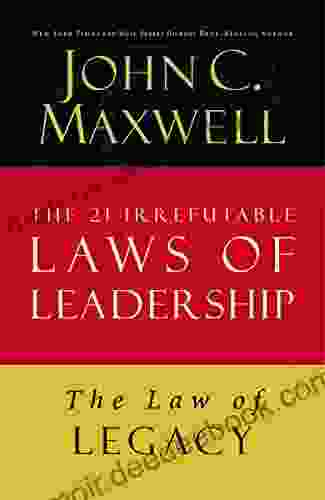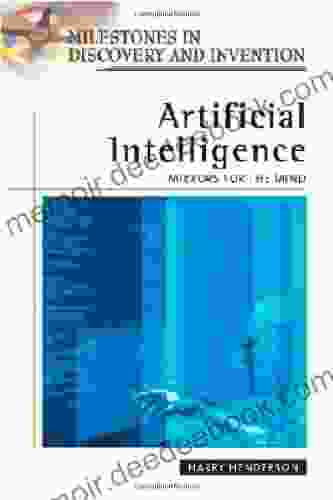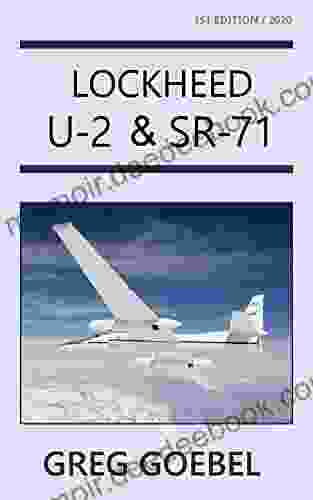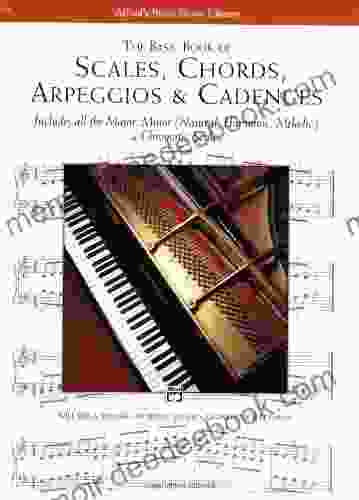The Intricate Study of Fugue: Unveiling the Harmonic and Structural Masterpiece of Baroque Music

The fugue, a renowned musical form of the Baroque era, stands as a testament to the intricate artistry and intellectual prowess of composers. Characterized by its distinctive polyphonic texture and rigorous formal structure, the fugue embodies the pinnacle of tonal music's complexity and sophistication. This comprehensive guide delves into the captivating realm of fugue analysis, illuminating its harmonic progressions, structural intricacies, and the techniques employed by composers to achieve this musical masterpiece.
Harmonic Framework
The fugue's harmonic foundation rests upon the intricate interplay of multiple voices or lines. Each voice independently carries its own melodic contours and rhythmic patterns, yet they are meticulously interwoven to create a harmonious tapestry. The fugue begins with a short melodic phrase known as the subject, which is then imitated by the other voices at different intervals. This imitative technique, a defining characteristic of the fugue, generates a rich harmonic landscape characterized by the overlapping of melodic lines and the exploration of various tonal relationships.
4.8 out of 5
| Language | : | English |
| File size | : | 46214 KB |
| Text-to-Speech | : | Enabled |
| Screen Reader | : | Supported |
| Enhanced typesetting | : | Enabled |
| Word Wise | : | Enabled |
| Print length | : | 524 pages |
| Lending | : | Enabled |
The harmonic progressions within a fugue are meticulously crafted to maintain tonal coherence and provide a sense of musical tension and release. Composers employ a variety of harmonic techniques, such as the use of suspensions, passing tones, and chromaticism, to create harmonic interest and drive the音楽forward. The fugue's harmonic structure often revolves around a central tonic key, around which the voices interact and explore contrasting tonal regions.
Structural Architecture
The fugue's formal structure adheres to a strict and highly organized plan. It typically comprises several sections, including the exposition, development, and recapitulation, each of which serves a distinct purpose in the overall musical narrative.
The exposition introduces the fugue's subject and establishes the tonal framework. The subject is presented in each voice in turn, creating a sense of contrapuntal dialogue. The exposition also features a contrasting countersubject, which interacts with the subject to create additional harmonic and melodic interest.
The development section offers a more complex and varied exploration of the fugue's thematic material. The subject and countersubject undergo a series of transformations, appearing in varied rhythms, intervals, and harmonic contexts. The development section provides the composer with an opportunity to showcase their contrapuntal ingenuity and harmonic artistry.
The recapitulation section marks a return to the fugue's initial thematic material. The subject and countersubject are reprised in their original form, providing a sense of closure and resolution. However, the recapitulation is not a mere repetition; it often includes subtle variations and embellishments to enhance the musical interest.
Contrapuntal Techniques
The fugue's intricate polyphonic texture relies heavily on the use of contrapuntal techniques. Counterpoint refers to the simultaneous combination of multiple independent melodic lines that maintain their own integrity while creating a harmonious whole.
Composers employ various contrapuntal devices to achieve a cohesive and balanced musical texture. Imitation, as mentioned earlier, is a fundamental contrapuntal technique that creates a sense of unity and musical dialogue. Other contrapuntal techniques include inversion, where the melodic line is reversed in direction; augmentation, where the rhythmic values are increased; and diminution, where the rhythmic values are decreased.
The fugue's contrapuntal complexity demands a high level of musical skill and theoretical understanding. Composers must carefully consider the melodic contour, harmonic implications, and rhythmic interplay of each voice to create a cohesive and musically satisfying work.
Famous Fugues and Composers
The fugue has captivated composers and audiences alike for centuries. Numerous renowned composers have created significant fugal masterpieces, each showcasing their unique musical style and compositional prowess.
Johann Sebastian Bach stands as the undisputed master of the fugue form. His Well-Tempered Clavier, a collection of 48 preludes and fugues in all major and minor keys, represents the pinnacle of fugal composition. Each fugue in this collection exhibits Bach's unparalleled contrapuntal mastery and harmonic ingenuity.
Other notable composers who have made significant contributions to the fugue repertoire include George Handel, Wolfgang Amadeus Mozart, and Ludwig van Beethoven. Handel's "Hallelujah Chorus" from the Messiah features a majestic fugue that showcases his dramatic and oratorical style. Mozart's Piano Sonata No. 8 in A minor, K. 310, includes a fugal development section that demonstrates his playful and elegant approach to counterpoint. Beethoven's "Grosse Fuge," Op. 133, represents a late-period masterpiece of contrapuntal complexity and emotional intensity.
Contemporary Applications
While the fugue form is primarily associated with the Baroque period, its influence and techniques continue to resonate in contemporary music. Many modern composers have drawn inspiration from the fugue's formal structure and contrapuntal principles to create innovative and experimental works.
Contemporary composers such as Igor Stravinsky, Béla Bartók, and Pierre Boulez have incorporated fugal elements into their compositions, often blending them with other musical styles and techniques. Stravinsky's Symphony of Psalms features a powerful and dissonant fugue in the final movement. Bartók's Music for Strings, Percussion, and Celesta includes a complex and tightly structured fugue that showcases his unique rhythmic and melodic language. Boulez's Piano Sonata No. 2 utilizes fugal principles to create a highly dissonant and rhythmically intricate musical landscape.
The fugue stands as a testament to the boundless creativity and technical mastery of composers throughout the ages. Its intricate harmonic progressions, meticulous structural organization, and sophisticated contrapuntal techniques demand close analysis and appreciation. Through the study of fugue, we gain insights into the profound artistry and intellectual rigor that has shaped the evolution of Western music.
Whether examining the fugal masterpieces of Bach or exploring the contemporary applications of this timeless form, the fugue remains an enduring and captivating subject that continues to inspire and challenge musicians, scholars, and music lovers alike.
4.8 out of 5
| Language | : | English |
| File size | : | 46214 KB |
| Text-to-Speech | : | Enabled |
| Screen Reader | : | Supported |
| Enhanced typesetting | : | Enabled |
| Word Wise | : | Enabled |
| Print length | : | 524 pages |
| Lending | : | Enabled |
Do you want to contribute by writing guest posts on this blog?
Please contact us and send us a resume of previous articles that you have written.
 Book
Book Novel
Novel Page
Page Chapter
Chapter Story
Story Reader
Reader Library
Library Paperback
Paperback E-book
E-book Magazine
Magazine Paragraph
Paragraph Bookmark
Bookmark Shelf
Shelf Glossary
Glossary Foreword
Foreword Synopsis
Synopsis Annotation
Annotation Scroll
Scroll Bestseller
Bestseller Library card
Library card Biography
Biography Encyclopedia
Encyclopedia Dictionary
Dictionary Thesaurus
Thesaurus Narrator
Narrator Resolution
Resolution Card Catalog
Card Catalog Stacks
Stacks Archives
Archives Reserve
Reserve Academic
Academic Journals
Journals Rare Books
Rare Books Special Collections
Special Collections Interlibrary
Interlibrary Thesis
Thesis Storytelling
Storytelling Awards
Awards Reading List
Reading List Theory
Theory Shannon Shaw
Shannon Shaw Bobby Shanks
Bobby Shanks Michelle Turner
Michelle Turner Pieter Waterdrinker
Pieter Waterdrinker Candace Pearson
Candace Pearson Payal Arora
Payal Arora Dirk Webb
Dirk Webb M Ennenbach
M Ennenbach Trinka Hakes Noble
Trinka Hakes Noble Paolo Castelnuovo
Paolo Castelnuovo Gerd Grubb
Gerd Grubb S B Alexander
S B Alexander Paul Tizzard
Paul Tizzard Valerie Hansen
Valerie Hansen Carolyn Beck
Carolyn Beck Max Abrahms
Max Abrahms Patrick Brislan
Patrick Brislan Carolyn Ellis
Carolyn Ellis Alfred Mann
Alfred Mann Leonard Mayer
Leonard Mayer
Light bulbAdvertise smarter! Our strategic ad space ensures maximum exposure. Reserve your spot today!

 Cormac McCarthyLesson 21 from The 21 Irrefutable Laws of Leadership: The Law of Empowerment
Cormac McCarthyLesson 21 from The 21 Irrefutable Laws of Leadership: The Law of Empowerment Bobby HowardFollow ·3.3k
Bobby HowardFollow ·3.3k Harvey BellFollow ·10.7k
Harvey BellFollow ·10.7k Charles ReedFollow ·11.7k
Charles ReedFollow ·11.7k Rubén DaríoFollow ·18.2k
Rubén DaríoFollow ·18.2k Greg CoxFollow ·17.2k
Greg CoxFollow ·17.2k Gerald ParkerFollow ·4.6k
Gerald ParkerFollow ·4.6k Ivan CoxFollow ·14.2k
Ivan CoxFollow ·14.2k Cooper BellFollow ·10.3k
Cooper BellFollow ·10.3k

 Vernon Blair
Vernon BlairHow to Get a Woman to Pay for You: A Comprehensive Guide...
In the modern dating...

 Levi Powell
Levi PowellPrinciples and Theory for Data Mining and Machine...
Data mining and machine learning are two...

 Andrew Bell
Andrew BellMirrors For The Mind: Milestones In Discovery And...
Mirrors have been a part of human history...

 Alec Hayes
Alec HayesDelving into Natural Language Processing with Java and...
Natural Language Processing (NLP) is an...
4.8 out of 5
| Language | : | English |
| File size | : | 46214 KB |
| Text-to-Speech | : | Enabled |
| Screen Reader | : | Supported |
| Enhanced typesetting | : | Enabled |
| Word Wise | : | Enabled |
| Print length | : | 524 pages |
| Lending | : | Enabled |














